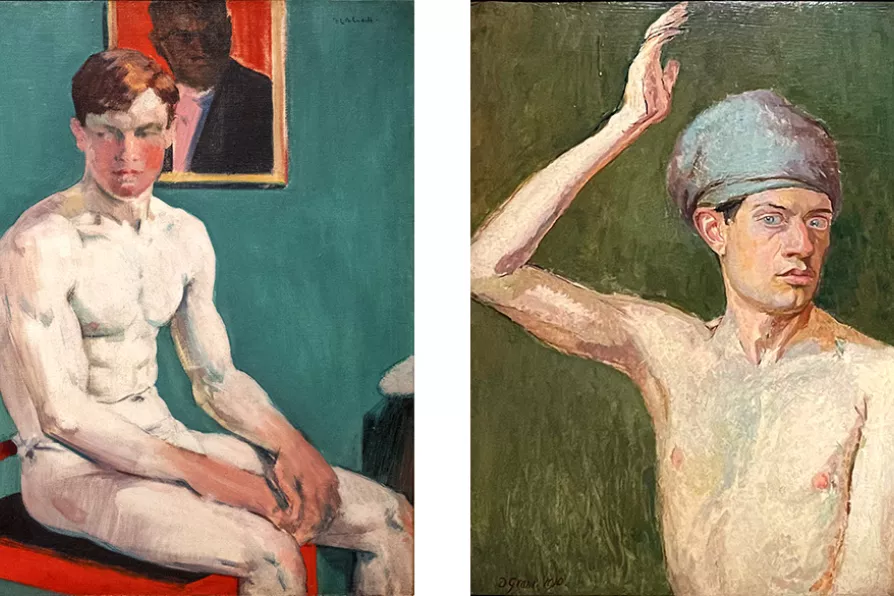
 CONFRONTING HOMOPHOBIA: (L) FCB Cadell, The Boxer, c.1924; (R) Duncan Grant, Study for Composition, Self-portrait in a Turban, 1910
[(L-R) Phil Wilkinson; By permission of the Trustees of the Dufferin Foundation]
CONFRONTING HOMOPHOBIA: (L) FCB Cadell, The Boxer, c.1924; (R) Duncan Grant, Study for Composition, Self-portrait in a Turban, 1910
[(L-R) Phil Wilkinson; By permission of the Trustees of the Dufferin Foundation]
The Scottish Colourists: Radical Perspectives
Dovecot Studios, Edinburgh
THIS is a very surprising and subversive show.
It presents itself as a celebration of “the Colourists” who are regularly held up as doyens of Scottish Modernism. These were JD Fergusson (1874-1961), SJ Peploe (1871-1935) and FCB Cadell (1883-1937), the upper-middle-class painters wealthy enough to visit pre WWI Paris and who adopted the high key palette of the French “Fauves” (the Wild Ones).
Previously they had painted posh still lives in muted colours — silver jugs, fans and jonquils — and after Paris they painted them again, but in thick blocks of primary colour, before retreating to Iona to render its empty beaches in ethereal pinks, blues and whites. So far, so familiar.

BLANE SAVAGE recommends the display of nine previously unseen works by the Glaswegian artist, novelist and playwright

KEN COCKBURN assesses the art of Ian Hamilton Finlay for the experience of warfare it incited and represents












